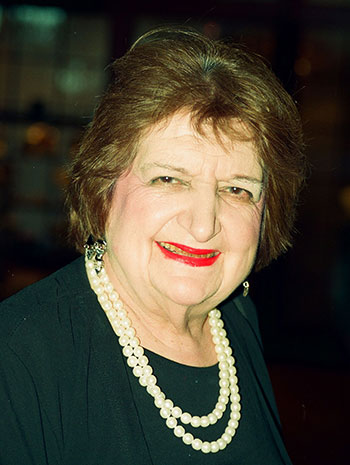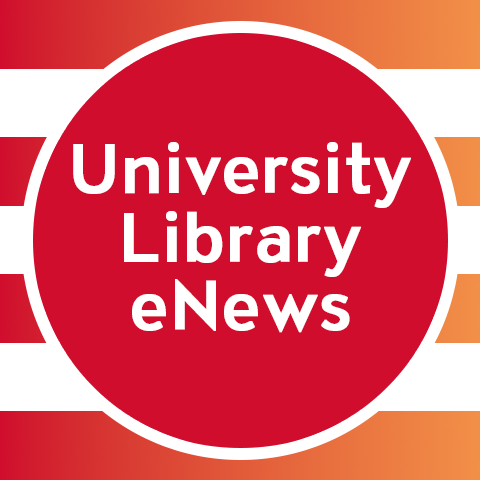Newsletter Edition: Fall 2021
Contributed by Elizabeth Altman
Special Collections & Archives launched its online exhibit, Past / Personal: Examining Oral History Narratives, presenting a curated selection from oral histories of “individuals who lived through significant historical events, participated in social movements, or experienced cultural trends that have shaped modern sociocultural perspectives.” We asked the curators to give us an overview of the project.
Q: How did the decision to create an exhibit based on oral histories come about?
Ellen: It’s an idea we’ve talked about and played around with for several years, though in the past the challenges of installing an audio-based exhibit in the Library’s physical exhibit gallery felt insurmountable, largely due to the absence of the technology required for such a space. Since so much of the campus community is still working, teaching and attending class from home this year, and since audio is so much more easily delivered online, it seemed like a good opportunity to finally present an exhibit based on audio resources generally, and our oral history collections more specifically.
Q: How was the virtual exhibit created and what were the roles of the curators and others who put it together?
Julieta: The exhibit was a collaborative effort between Special Collections & Archives curators and the Library Systems Group Web Team. Ellen had a few ideas about the design of the exhibit and the other curators contributed to the concept of the overall flow. Collaboratively, we made selections and created themes for the exhibit. The Web Team made our final design come to life, inserting interactivity and keeping us aware of user experience and needs. As it stands now, the exhibit highlights only a small fraction of the oral histories that are held in Special Collections & Archives.

Q: How did you select the themes for each of the six sections, and how do you think they contribute to the overall flow of the exhibit? What subthemes didn’t make the cut?
Julieta: Each of the curators reviewed oral history recordings they believed bore witness to issues of importance to the CSUN community. Then we discussed their potential inclusion, and ultimately made selections based on subject matter, biases, and audio quality, both good and bad, to expose students and other exhibit viewers to all the varied characteristics of oral histories.
Older audio files, especially those first recorded onto physical cassettes or other outmoded media, can degrade over time and with each format transfer. Even the original recordings can be filled with static and white noise, making the audio difficult to understand. We encountered a few audio files that were not viable for these reasons. However, after collectively reviewing our tentative selections, we accepted or rejected interviews based on their quality and relation to one another. We wanted to present a balance of perspective in each theme. We settled on six themes: Remembering Childhood, Sharing Trauma, Witnessing History, Elevating Experiences, Differing Perspectives, and Creating Change.
Across all six themes, one of our overarching goals was to convey the personal, intimate nature of oral histories as resources—they’re all “about” a larger theme, event, or idea, but are simultaneously intensely personal and narrow in focus since they’re first-person. As a result, a single event can be presented in different ways by different interviewees, depending on their experience, where they were, or who they are.
Q: What collections are the oral history excerpts drawn from?
April: We pulled interviews from over a dozen collections. The majority are from oral history projects in which the goal was to record the stories and memories of individuals. Examples include the World War II Survivors Oral History Project, Jewish Family Services Oral History Project, and the African-American Life in Los Angeles oral history project located in the Tom and Ethel Bradley Center. Other interviews in the exhibit are from collections representing the life and work of those who donated them. We included interviews from author and journalist Tom Reilly, author and historian Catherine Mulholland, and historian and sexologist Vern Bullough.
Q: What do you think the excerpts show about role of oral history collections? What will people be surprised to find?
Mallory: The excerpts demonstrate the importance of preserving and considering many diverse and varied perspectives when documenting a particular event or moment in history. The wide-ranging voices in our oral history collections aim to accommodate this need to preserve viewpoints not usually found in official paper records. Exhibit viewers may be surprised to find that oral history interviewees' own lived experiences play such an important role in the remembering and recounting of a particular event or period of time.
How do you hope faculty will integrate Past/Personal into their instruction?
Ellen: We create exhibitions in the Library in order to promote use of our unique collections in student research, instruction, and other pursuits across campus. Instructors in different disciplines might use the exhibit in different ways, of course, but generally speaking we’re pleased to hear about any assignment that draws on our exhibits, exposing students to rare and unique library resources that are available to them at CSUN within the context of their coursework.
Curators of the exhibit:
- Ellen Jarosz, Head of Special Collections & Archives
- Julieta Garcia, Archivist, International Guitar Research Archives
- April Feldman, Archivist, University Archives
- Mallory Furnier, Archivist, Urban Archives and Old China Hands Archives
Past / Personal: Examining Oral History Narratives will be a featured exhibit through July 15, 2022. You can learn more about the CSUN University Library’s oral history collections at the Online Archive of California.
